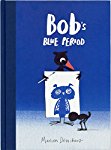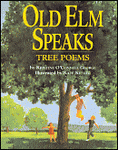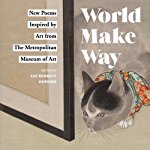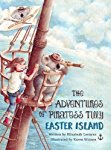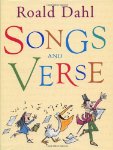Where I grew up, on the island of Cyprus, Easter is a very big celebration. Special Baked treats are made, families get together to celebrate, and they decorate eggs. Two families lived in our building, mine, and one other. We were very close to the Protopapas family and I often spent time with Yiayia, the grandmother. She did not speak any English, and in the beginning I spoke no Greek, but we always found a way to communicate. Yiayia taught me how to make flaounes, a sweet and savory bread, and she also showed me how to decorate eggs using the water from boiled onion peels. Often we would use the leaves of plants to create an image on the eggs. We would polish our decorations by rubbing wax all over them, and then Yiayia would place the eggs in a basket lined with bright green leaves,
Beautiful Eggs: A journey through decorative traditions from around the world
Illustrated by Alice Lindstrom
Nonfiction Board Book
For ages 4 to 6
Scribble, 2021, 978-1-95035-4436
When we think of egg decorating, we usually think of Easter festivities. Many people in countries around the world decorate boiled or blown eggs for this spring celebration. However, in some cultures they decorate eggs for other celebrations. In Mexico pretty eggs also appear on Cinco de Mayo and other festive days.
People have been decorating eggs for centuries, and they have developed all kinds of ways of making eggs beautiful. A great deal of time and effort can be spent on decorating eggs, and some of these creations are so prized that they are put in museums or art galleries.
In the Ukraine they have been creating extremely colorful eggs that are covered with fine and delicate designs for a long time. Red and green dyes are commonly used, and the designs are drawn on using beeswax.
In the Czech Republic Easter eggs are decorated using many dye colors, and straw. When the eggs are complete, there are “Shiny kaleidoscope patterns” all over them.
In Japan they use washi paper to decorate their eggs. The colorful printed papers, that are also use to make origami, are used to cover the eggs.
With gorgeous collage illustrations and informative pieces of text, the illustrator of this board book introduces children to seven different eggs decorating traditions. At the back of the book young readers will find a fold out page that children can use as a stencil to make their own drawing of a decorated egg.
Illustrated by Alice Lindstrom
Nonfiction Board Book
For ages 4 to 6
Scribble, 2021, 978-1-95035-4436
When we think of egg decorating, we usually think of Easter festivities. Many people in countries around the world decorate boiled or blown eggs for this spring celebration. However, in some cultures they decorate eggs for other celebrations. In Mexico pretty eggs also appear on Cinco de Mayo and other festive days.
People have been decorating eggs for centuries, and they have developed all kinds of ways of making eggs beautiful. A great deal of time and effort can be spent on decorating eggs, and some of these creations are so prized that they are put in museums or art galleries.
In the Ukraine they have been creating extremely colorful eggs that are covered with fine and delicate designs for a long time. Red and green dyes are commonly used, and the designs are drawn on using beeswax.
In the Czech Republic Easter eggs are decorated using many dye colors, and straw. When the eggs are complete, there are “Shiny kaleidoscope patterns” all over them.
In Japan they use washi paper to decorate their eggs. The colorful printed papers, that are also use to make origami, are used to cover the eggs.
With gorgeous collage illustrations and informative pieces of text, the illustrator of this board book introduces children to seven different eggs decorating traditions. At the back of the book young readers will find a fold out page that children can use as a stencil to make their own drawing of a decorated egg.








